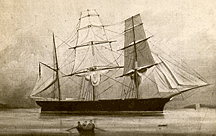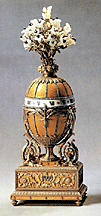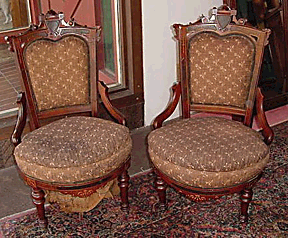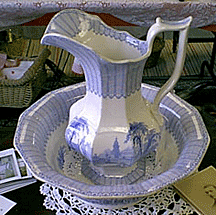You, Too, Can
Determine If
What You Own Has Value
by
Bob Brooke
Appraising
antiques and collectibles is an art, not a science. It’s a field
reserved for professionals. The techniques for determining value vary
from one field to the next and involve extensive research, so the
appraisal processes can be an expensive one. Certain overall principles
apply. You can determine if an item you own has some value by asking
yourself the following:
1. How old is your
item?
 There are a variety of techniques for determining the age of any
antique or collectible. Check the age of paintings, for example, by
examining the back of the canvas for the rough, uneven threads that
indicate handwork. The type of wood used in furniture–particularly the
"secondary" woods used for the inside of drawers–is an
important tip-off of age. Another sign is a circular saw pattern in the
wood, which indicates the piece of furniture was made after 1840. There are a variety of techniques for determining the age of any
antique or collectible. Check the age of paintings, for example, by
examining the back of the canvas for the rough, uneven threads that
indicate handwork. The type of wood used in furniture–particularly the
"secondary" woods used for the inside of drawers–is an
important tip-off of age. Another sign is a circular saw pattern in the
wood, which indicates the piece of furniture was made after 1840.
2. How rare is it?
 The more of an item that’s produced, the less valuable it is
today. But not everything rare is valuable. An old book of poetry by an
unknown author might be extremely rare, for example, but who wants to
buy it? How rare was your item was when it was first made? The more of an item that’s produced, the less valuable it is
today. But not everything rare is valuable. An old book of poetry by an
unknown author might be extremely rare, for example, but who wants to
buy it? How rare was your item was when it was first made?
Think in terms of a
pyramid. At its top sit unique items made for royalty of the finest
materials available, such as Faberge eggs made for Tsar Nicholas II of
Russia. At the bottom sit mass-produced items made of commonplace
materials for the masses. As a rule of thumb, if an item was rare and
valuable on the day it was made, it'll be even more rare and valuable
today.
3. Is it genuine?
 When a collectible becomes popular, fakes and forgeries abound. Some
forgeries are good enough to fool the experts. But many are obvious
frauds lying in wait for the unwary and uninformed. When a collectible becomes popular, fakes and forgeries abound. Some
forgeries are good enough to fool the experts. But many are obvious
frauds lying in wait for the unwary and uninformed.
Perfectly round wood in a
piece of furniture is a tell-tale sign of fakery because wood becomes
distorted with age. Look carefully at ceramics to see if the potter
applied the decoration on top of the glaze after the firing. Real cameos
are sculpted from one piece of ivory while fakes are often two or more
pieces glued together. Lastly, good reproductions can be as valuable as
the originals, as in the case of Shaker chairs.
4. What’s the
condition of your piece?
 Condition is the most important element in determining value. Did
you know, for example, that the value of a rare book can drop by more
than 100 percent it doesn't have its dust jacket? Did you know that the
"patina" on fine furniture (that is, furniture made before
1830) is one of its most important features, and too much cleaning and
restoration can ruin it? Victorian furniture, generally, can be restored
without substantially affecting its value. Condition is the most important element in determining value. Did
you know, for example, that the value of a rare book can drop by more
than 100 percent it doesn't have its dust jacket? Did you know that the
"patina" on fine furniture (that is, furniture made before
1830) is one of its most important features, and too much cleaning and
restoration can ruin it? Victorian furniture, generally, can be restored
without substantially affecting its value.
Examine your item inside
and out. A hairline crack that’s barely noticeable may decrease the
value of a porcelain vase by as much as 40 percent. Sometimes the value
of a rare vase can be diminished greatly because the owner left water in
it and caused a "ring-aroundthe-collar" stain in the neck.
5. Is your item
typical or trendy?
 The "typical" work of an artist or craftsman is always
worth more than the unusual work, even though the latter may be more
rare. That's because collectors are always looking for representative
examples of a given period, craft or style. The "typical" work of an artist or craftsman is always
worth more than the unusual work, even though the latter may be more
rare. That's because collectors are always looking for representative
examples of a given period, craft or style.
It's also a good idea to
be aware of the current trends in collecting. The mere fact that
something is "hot" can add dollar signs to its price tag.
Among the hottest trends today is Staffordshire ware because of all the
beautiful photographic spreads containing it in country home decorating
magazines. Keep on top of what's hot and what's not.
6. Does your item tell
a story?
Is your piece associated with a famous person or event in history?
Do you know where it was made and who owned it in the past? Dealers call
this an item’s "provenance," and it can be vital to
establishing value. Find out all you can about your item.
But don't accept the
seller's word for the provenance of an item. You must have written proof
such as a letter from the time the item was used.
If you can answer the
above questions positively, your item most likely has value. Exactly how
much it’s worth can only be determined by a professional antiques
appraiser.
To read
more of my articles, please
visit
my Web site.
<
Back to More Special Features
Next Article > |
